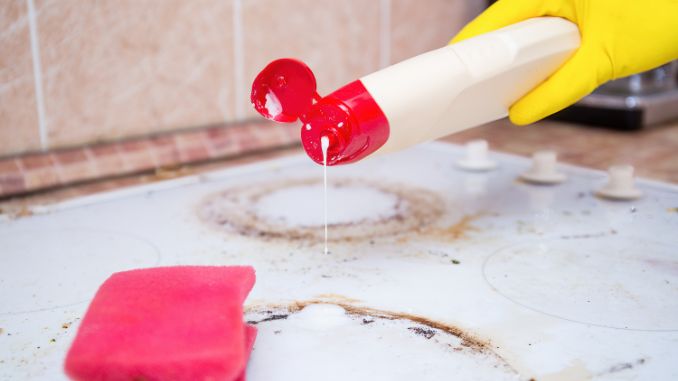Stains are those relentless little warriors that seem to find joy in clinging to our clothes, carpets, and couches. Who hasn’t sighed deeply at the sight of a coffee spill on a white shirt or a ketchup drop on a new sofa? It’s like they have a mind of their own, plotting to ruin our day (and our fabrics). Those dreaded marks seem to have more lives than a cat.
To combat this, we’re going to arm you with pro-level tips and tricks that will send those pesky spots packing. It’s about time we roll up our sleeves and get ready to show those stains who’s boss.

The Enemy We Face
Ever wonder what makes stains so stubborn? It’s all about chemistry and a bit of bad timing. Stains are essentially substances that have decided to get cozy with the fibers of our materials. Whether it’s your favorite shirt or that plush sofa, stains don’t discriminate. They’re the unwanted guests that just don’t want to leave.
There are a few usual suspects in the world of stains. First, we have organic stains, like food, blood, and grass. Then there are the inorganic stains, such as ink and dye, often leaving a memorable mark. And let’s not forget the grease-based stains. Oil and butter are their ringleaders, creating slick spots that resist water and love to linger.
What makes some stains harder to remove than others? Well, it’s a combination of factors. The type of material, the age of the stain, and the very nature of the staining substance all play a role. Some stains, like red wine, have pigments that bond like best friends with fabric fibers. Others, like oil, create a barrier that repels water, making them harder to clean. Understanding these sneaky culprits is the first step in our battle plan to beat them at their own game.
The First Line of Defense
Speed is your best friend when it comes to battling stains. The faster you act, the less time the stain has to throw a permanent party on your fabrics. We know it sounds harsh, but there are times when every second counts in keeping that spill from becoming a lifelong memory on your favorite shirt.
So, let’s talk arsenal. Your stain fighting toolkit should include some household heroes like white vinegar, baking soda, and hydrogen peroxide. These are going to be your trusty sidekicks in your quest against stains, as they offer a natural and effective way to tackle most mishaps.
But what about DIY remedies versus commercial cleaners? DIY solutions are great for a quick response and are often less harsh on fabrics. Plus, they have the added bonus of being eco-friendly and budget-friendly. Commercial cleaners, on the other hand, are the heavy artillery, formulated for specific stain types and offering extra power for those particularly stubborn spots. Whichever approach you choose, having these tools at the ready is your first step to winning the war against stains.
Stain Removal Techniques
When it comes to stain removal, there are a few golden rules to live by. First, always blot, don’t rub. Rubbing just spreads the chaos. Test any treatment on a hidden area first to avoid an “oops” moment.
Let’s dive into some specific strategies:
Food and Drink Stains:
- Red Wine: Blot gently, then apply a mixture of hydrogen peroxide and dish soap. Rinse with cold water.
- Chocolate: Scrape off excess chocolate, then treat with a pre-wash stain remover or a dab of dish soap. Launder as usual.
Biological Stains:
- Blood: Rinse with cold water (hot water will set the stain). For tough cases, apply hydrogen peroxide or a paste of salt and cold water.
- Sweat: Pretreat with a mixture of baking soda and water or white vinegar. Let it sit, then wash in the warmest water safe for the fabric.
Other Stubborn Stains:
- Ink: Place the stained area over a towel, apply rubbing alcohol, and blot. Repeat until no more ink transfers.
- Oil: Sprinkle baking soda on the stain to absorb the oil, then brush off. Apply dish soap and launder.
For a quick stain-fighting reference:
- Red Wine: Hydrogen peroxide + Dish soap, cold rinse
- Chocolate: Pre-wash stain remover/Dish soap, launder
- Blood: Cold water rinse, hydrogen peroxide/salt paste
- Sweat: Baking soda + Water/White vinegar, warm wash
- Ink: Rubbing alcohol, blot over towel
- Oil: Baking soda, brush off, dish soap, launder
Dealing with Pet Hair
Dealing with pet hair is a familiar challenge for any pet owner. It seems to have a knack for showing up in the most unexpected places, clinging to every surface in your home. However, managing it doesn’t have to feel like a never-ending struggle. There are several tools at your disposal that can make removing pet hair a much simpler task. Lint rollers, for instance, are perfect for a quick run-over of your clothes and upholstery, picking up hairs with minimal effort. Then there’s the trusty vacuum cleaner—opt for one that comes with special pet hair attachments, and you’ll find it’s a real game-changer in your cleaning routine. For those tricky fabric surfaces, donning a pair of rubber gloves can be surprisingly effective. Just dampen the gloves slightly and glide your hands over the fabric; you’ll find that pet hair sticks to the gloves, making it easy to peel off and dispose of. With these tools in hand, you’ll find that keeping your home free of pet hair is a much more manageable task.
Pro Tips and Tricks
Let’s let you in on a few trade secrets that can elevate your stain-fighting game. Ever thought of using shaving cream on a grease stain? It’s not just for a smooth shave! Apply a dab of shaving cream directly on the grease stain, let it sit for a few minutes, then wash away. It’s surprisingly effective.
Heat can be a friend or foe when it comes to stain removal. Use it wisely! Heat sets protein-based stains like blood and milk, so always use cold water for these. But for oil-based stains, a little warmth can help dissolve the grease, making it easier to wash out.
Timing and patience are crucial. Acting fast can prevent a stain from setting, but once you’re treating it, patience pays off. Some treatments require time to break down the stain. After applying your chosen solution, give it time to work its magic before laundering. Rushing can lead to disappointment, and nobody wants that in their laundry life.
Preventive Measures Against Stains
Staying ahead of stains is about adopting a few smart habits. For starters, treat your clothes and fabrics like they’re VIPs at a stain-free party. Regularly using fabric protectors can change the game, especially for those prone to accidental spills.
When it comes to surfaces, like your kitchen counter or the dining table, a protective treatment can work wonders. Seal those surfaces to make them less hospitable for stains looking to settle down.
Quick tip: keep a clean-up kit handy. Whether it’s a spill on the carpet or a splash on your blouse, immediate action can often stop a stain in its tracks. A clean cloth, some water, and a basic detergent can save the day before the stain decides to move in permanently. Remember, the best offense against stains is a good defense!
When to Call in the Cavalry
Living with pets means deep cleaning is part of the package. It’s not just about aesthetics; it’s about health—for you and your pets. Aim to deep clean your home every three to six months. Pets can bring in more dirt and allergens, so regular deep cleaning can keep your home healthy and fresh. Use a steam cleaner for floors and upholstery to remove dirt and allergens. Don’t forget to wash pet bedding, toys, and any removable covers. For pet spaces, use pet-safe disinfectants to keep the area sanitized.
If allergies are a concern, focus on areas where allergens accumulate, like carpets, rugs, and pet beds. Regularly replace air filters, and consider an air purifier with a HEPA filter to capture pet dander and other allergens.
